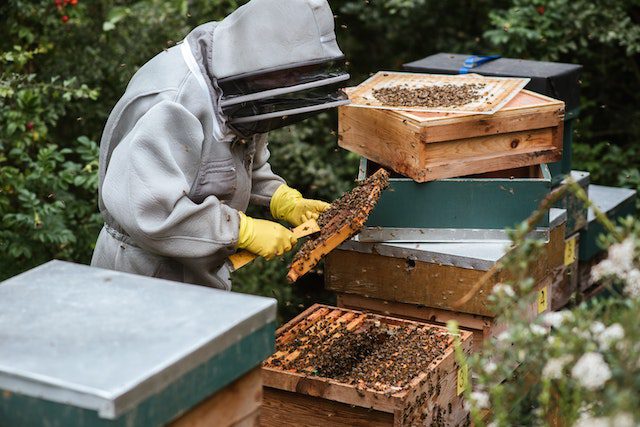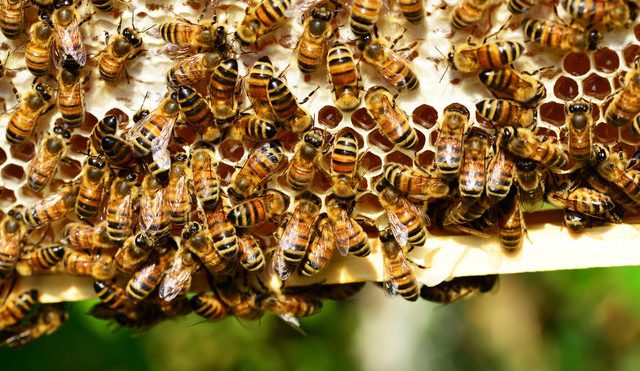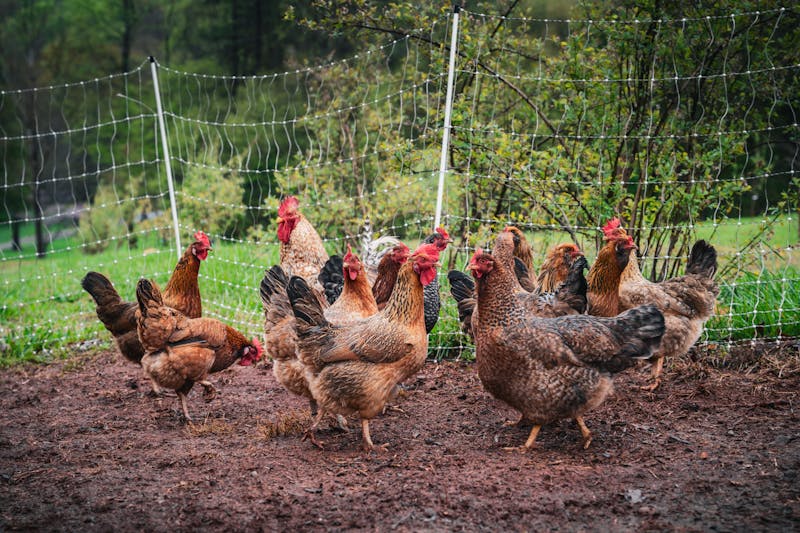Do you know that nearly 1 in 10 of Europe’s wild bees are facing extinction? In Africa and globally, the bee populations have been declining. And you need to be concerned.
Bees give us more than honey. These insects play a vital role in human society, contributing to food production and ecosystem stability. However, their populations have been rapidly declining due to various threats, including parasites, pesticides, and colony collapse disorder.
This post gives you a comprehensive overview of the reasons behind this decline and the implications it has for human survival and the economy. It concludes with 10 practical ways you can stop it.
The Importance of Honey Bees
Wondering why need bees? Native and managed bees provide important pollination services
Honeybees are essential for human survival and the global economy. Approximately one out of every three meals that humans consume is made possible by the pollination services provided by bees. The dollar value of plants pollinated by bees in the US each year amounts to a staggering $265 billion. Their role in crop pollination ensures the production of a diverse range of fruits, vegetables, nuts, and oilseeds.
Related: Which are the best types of bees in Kenya?
In summary, these are the reasons we need bees.
- Bees are important pollinators and propagators of about 75% of flowering plant species in diverse ecosystems keeping the cycle of life alive.
- Bees also pollinate around 80% of wildflowers in Europe
- More than 100 U.S.-grown cash crops rely on pollinators. The added revenue to crop production from pollinators is valued at $18 billion.
- Bees and other pollinators including birds, bats, butterflies, moths, flies, wasps, and beetles, support healthy ecosystems needed for clean air, stable soils, and diverse wildlife.
- The U.S. today has about 2.8 million honey bee hives
Why are Honey Bees Disappearing

Honey bees have been disappearing at an alarming rate. Annual losses of honey bee colonies range from 30% to 90% worldwide. This phenomenon is known as colony collapse disorder, which has been observed in many countries. The loss of honey bees has significant implications for food security and biodiversity.
The decline of honey bees is a result of multiple factors. They include habitat loss, improper apiary management, pesticide usage, climate change, pests and pathogens, competition among native
and introduced bee species, poor nutrition, and other factors
Here are the causes of bee decline in detail.
Habitat Loss
Habitat loss is one of the driving factors of bee decline. Changes in land use, including insensitive urban development and intensive farming, have caused significant losses and fragmentation of pollinator-friendly habitats. This results in bees losing the diverse food sources they need for a healthy diet, and bees must have enough flowers to forage and safe places to use for nesting. The loss of key habitats on farmland, in particular, has meant that wildlife, including bees, have become more dependent on smaller areas, leading to increased competition and reduced genetic diversity
Modern Agriculture methods
Many modern agricultural practices, such as crop monocultures and genetic uniformity, have contributed to the loss of bee habitats and food sources. Poor nutrition and increased stress levels from transportation and exposure to pesticides further weaken bee populations. The combination of these factors, along with the increasing impact of parasites, has led to the rise of colony collapse disorder. This disorder has quickly become a critical issue for humanity’s food supply and ecosystem stability.
Parasites
Microscopic mites, such as Acarapis woodi and Varroa destructor, pose a significant threat to honey bees. These mites infect the tracheae of bees, laying eggs and feeding on their bodily fluids. Varroa destructor reproduces within honey bee hives and lays eggs on bee larvae before they pupate. This infestation weakens and infects bees, making them more susceptible to other pathogens.
One of the most destructive consequences of Varroa mite infestation is the collapse of honey bee hives. The mites release themselves from the cell and spread throughout the hive, starting a cycle of approximately 10 days. During this time, they weaken bees by sucking their bodily fluids and transmitting viruses that can lead to birth defects. The combination of mite infestation and viral infections can lead to the collapse of entire colonies.
Improper Apiary Management
Improper apiary management is one of the factors contributing to bee decline. Poor management practices, such as inadequate nutrition, disease management, and lack of proper hive maintenance, can lead to weakened colonies and increased susceptibility to pests and diseases. Beekeepers should avoid placing bees in areas with inadequate floral resources and using equipment from hives where the cause of bee death is suspicious. Proper beekeeping practices, such as regular hive inspections, disease management, and providing adequate nutrition, can help protect honey bees from decline
Pesticides
Another significant threat to honey bees is the widespread use of neonicotinoids, a class of insecticides.
These chemicals were introduced as an alternative to older pesticides but have proven to be harmful to bees. Neonicotinoids are the most widely used insecticides in the world. Bees come into contact with these toxins when neonicotinoids are used on crops such as corn, canola, and various fruits and vegetables. Exposure to neonicotinoids through pollen and water can have devastating effects on bee health, including convulsions, paralysis, and even death.
Moreover, these toxins can impair bees’ navigation abilities, leading to confusion and isolation.
Climate change
Climate change contributes to bee decline by causing habitat loss and disrupting bee behavior. Changes in temperature and precipitation exceed bees’ historical tolerances, leading to habitat destruction, altered flowering times, and increased susceptibility to diseases. This disrupts bee nesting behavior and reduces available food sources, impacting bee populations
Competition
Competition among bee species, such as honey bees and native bees, for food resources like pollen and nectar, can lead to reduced availability of these resources. This competition can affect the diets of native bees and impact their overall survival, contributing to bee losses
Colony Collapse Disorder (CCD
Colony Collapse Disorder (CCD) is a phenomenon where the majority of worker bees in a colony disappear, leaving behind a queen, plenty of food, and a few nurse bees to care for the remaining immature bees and the queen. CCD was first reported in 2006, and it is believed to be complex and a result of multiple factors, including pathogens, poor nutrition, pesticide exposure, lack of genetic diversity, and habitat loss.
How can you Save the Bees?

Preserving honey bees and their habitats is crucial for the survival of both bees and humans. Collaboration and support from individuals, organizations, and governments are paramount in addressing the threats facing honey bees. Efforts should focus on promoting sustainable agricultural practices, reducing pesticide use, and creating bee-friendly habitats. Additionally, raising awareness about the importance of honey bees and their role as pollinators is crucial for fostering a sense of responsibility toward protecting these vital creatures.
The table below has 10 ways you can use to reduce bee decline.
| Tips | Strategies |
|---|---|
| Good Hive Management and Hydration | Ensure healthy and hydrated hives. Feed and maintain hives regularly. Paint supers with light colors for summer cooling. Check and refill water sources, as healthy colonies can consume a gallon of water daily. |
| Pollinator-Friendly Pest Management | Prioritize pollinator health in pest management plans such as IPM Refrain from using pesticides on ornamental plants that attract bees, such as heather, lavender, linden, rhododendron, and roses. Minimize or avoid using pesticides and chemical fertilizers in your landscape, especially in early spring, to give all bees a healthy start to their year |
| Native Plant Integration | Incorporate native plants with blooms throughout the growing season. Focus on diverse floral habitats in urban areas. Use water-wise native plants for landscaping. |
| Grow Pollinator-Friendly Plants | Choose plants that are not highly hybridized. Opt for mints, herbs, and disc-type flowers for easy access to pollen. Plant early-blooming flowers in groups for overwintering bees. |
| No Mow May Movement | Support the “No Mow May” movement to nurture pollinators and wildlife. |
| Creating Pollinator-Friendly Spaces | Grow gardens to provide nectar and pollen. Use pollinator-friendly planters if space is limited |
| Water Conservation and Safety | Avoid using overhead sprinklers during bee-active hours. Exercise caution when flood irrigating near native ground-nesting bee nests. Provide clean water sources with floating objects for drowning prevention. |
| Habitat Preservation and Enhancement | Preserve ground-nesting bee habitats by avoiding tilling and disturbance. Limit the use of landscape weed fabric. Include plants with hollow or pithy stems and provide nesting blocks for native cavity-nesting bees. Support the “Leave the Leaves” campaign to provide hibernating spots for queen bumble bees. |
Read Next: Is Commercial Beekeeping in Kenya Profitable?
Conclusion:
The decline of honey bees due to threats such as parasites and colony collapse disorder poses a significant risk to human society. As key pollinators, honey bees are indispensable for global food production and ecosystem stability. Efforts must be made to address the multiple challenges these bees face, including the risks posed by parasites, the use of harmful insecticides, and the impact of modern agricultural practices. It is only through collaboration and collective action that we can protect honey bees and ensure the availability of essential crops for future generations.



